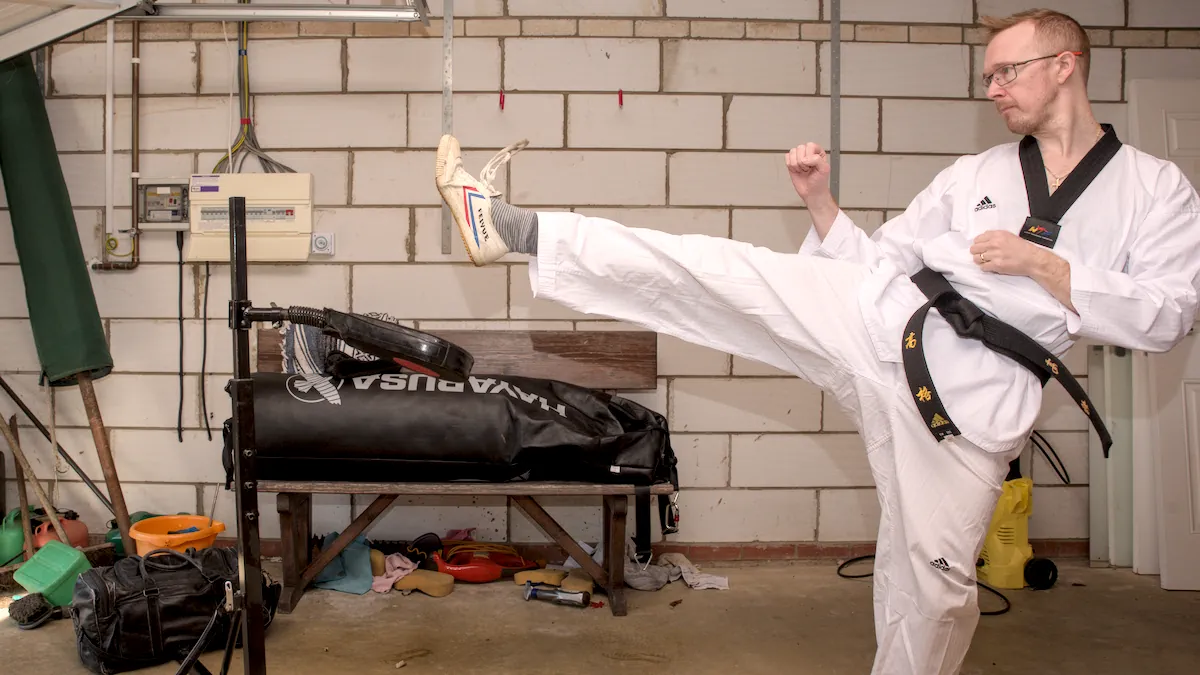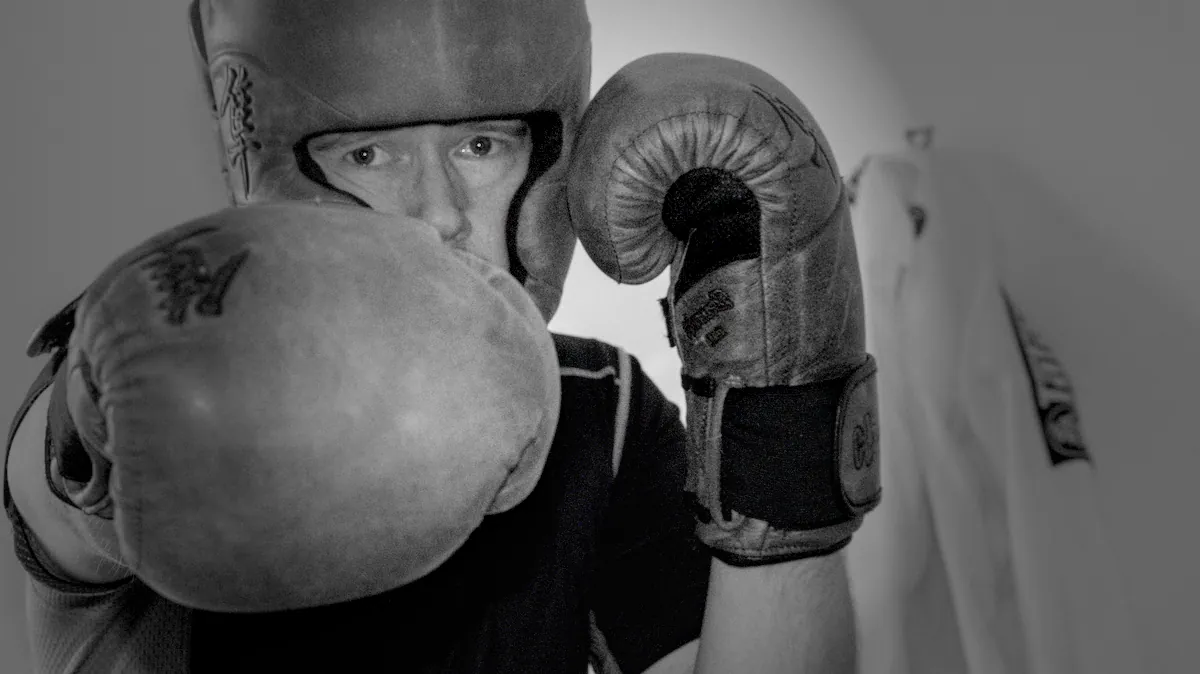Since the dawn of advertising, there has been some new trend or gimmick guaranteed to get you rock-hard abs like all the people in magazines. We all remember the ab rocker from the 90s that every stay-at-home mom had in their basement. It was an impulse buy they hoped would help redefine their waistlines.
But as you may already suspect–it’s all a big lie. Many of the standard ab workouts we do consistently are not as good as we think. Instead, understanding how to strengthen the abs functionally with a personalized abs workout will make you look more masculine and be a game changer.
How To Decipher All the Medical Mumbo Jumbo
Sadly, when it comes to fitness and working out, there’s a lot of conflicting information. This applies to ab and core strength. As a Doctor of Physical Therapy, seeing how many people are misled by the latest fads, especially regarding something as important as the core, is frustrating.
Let’s break down some of the standard terms you may hear regarding abs and what they mean.
- Core Strength: This refers to the strength and stability of your entire midsection, including muscles in your abdomen, back, hips, and pelvis. This is important for maintaining good posture, optimally supporting the spine, and preventing injuries to local joints, muscles, ligaments, and other connective tissue.
- Six-pack Abs: This term refers to the visible muscle definition in the abdominal muscles, specifically the rectus abdominis. While it may seem like having a six-pack is ideal, it’s not an indicator of overall core strength or health. Since the muscle group that creates a chiseled look is only one small muscle group in the “core,” some people with visible abs may ironically have poor muscular balance and be at risk of injury.
- Neutral Spine: This refers to the natural curvature of your spine when it is in its optimal position for stability and support. While the spine looks like a flattened “S,” the degree of curvature will vary for each individual based on genetics, development, and postural habits. What is “ideal” will also change with different postures and activities. Maintaining a neutral spine during exercises is crucial to protect against injury.
- Flat Back: Neutral spin and a “flat back” are often used synonymously in error. You might have heard to keep your back flat during ab exercises, but this can be misleading. While it’s essential to maintain a neutral spine, keeping your back completely flat against the ground can cause harm due to excessive pressure on the spine.
- Lower Abs: This refers to the lower portion of your transverse abdominis, a muscle group that runs horizontally across the lower stomach and acts as a built-in “corset” for the trunk. It’s a common misunderstanding that we can isolate this area. Studies show poor activation of the lower abs can contribute to low back pain (and vice versa).
- Engage Your Core: This is a common yet confusing term used in fitness and physical therapy. Simply put, engaging your core means using the muscles of your midsection to support and stabilize yourself during activities. It does NOT mean tightening your muscles as hard as possible while holding your breath (a common reaction). This is especially important during exercises like lifting weights or performing dynamic movements.
- Functional Strength: This refers to the ability of your body to perform everyday tasks and movements efficiently without causing harm or unnecessary strain to muscles and joints. Functional core strength is crucial for preventing injuries and maintaining good posture in daily activities such as bending, twisting, lifting, and reaching.
Ultimately, the exercises we choose to do should help us build strength in our daily movement. Who cares how many crunches you can do if you can’t pick something up off the floor without tweaking your back?
Abdominal Exercise Myths That Need To Go Away
Now we understand some core terms better, let’s dive into common myths and misconceptions about ab exercises.
Myth #1: More Is Better
Many people believe doing endless crunches or sit-ups will lead to more muscular abs. However, this is not the case. Quality over quantity is vital when it comes to ab exercises.
If you’re not using proper form and engaging the correct muscles, doing more repetitions will not necessarily lead to better results. Those 10 to 30-minute “ab burning” classes that are popular can be counterproductive if you’re not doing the exercises correctly. For most people, their abs fatigue within a few minutes, making this class style pointless even for macho-looking alpha males.
Myth #2: Spot Reduction Works
Sorry to burst your bubble, but targeting specific areas for fat loss is impossible. Doing a ton of ab workouts will not automatically lead to a six-pack if you still carry excess body fat. Fat loss happens through overall calorie deficit, not just targeting one area.
Myth #3: The More Intense, the Better
Many people believe they need to feel extreme pain or muscle soreness after a workout to be effective. However, this is not true. While some soreness can indicate muscle growth and adaptation, pushing yourself too hard can lead to injury. It is essential to listen to your body and find a balance of challenging yourself without overdoing it.
Myth #4: The Only Way Is Crunches or Sit-Ups
As mentioned, traditional crunches or sit-ups are not the end-all-be-all for ab exercises. They aren’t very effective choices, especially for postpartum women or anyone suffering from low back pain. In fact, for these groups, it can exacerbate an underlying issue due to their heavy reliance on hip flexors and repetitive flexion.
Mixing up your ab routine and incorporating exercises that target all areas of the core, not just the rectus abdominis is essential.
Myth #5: You Can Only Work Your Abs at the Gym
Another common misconception is that ab workouts are only done at the gym or with expensive equipment. However, many practical ab exercises can be done at home with minimal to no equipment.
For example, in your living room, you can do a quick 5-minute HIIT workout (high-intensity interval training) with planks, side plank variations, and mountain climbers. The key is to target all areas of the core while maintaining proper form.
Myth #6: Abs Are Only for Aesthetics
While toned abs may be a desirable physical attribute, having a strong core goes far beyond appearance. A strong core is essential for overall health and well-being, from preventing injury to improving posture and balance. Focusing on functional strength rather than aesthetics can lead to a healthier, more sustainable approach to ab exercises.
When ab exercises are combined with other essential lifestyle habits–like practicing martial arts (yes, it’s essential, read “Martial Arts Will Solve All Your Problems“), better nutrition, getting enough sleep, and adequate stress management–your quality of life improves, rather than just your waistline.
The Abs Workout You Need
So, what’s the secret to achieving strong abs? It’s quite simple: focus on functional movements that engage your entire core rather than trying to persevere by doing endless crunches. Here are some practical ab exercises to incorporate into your workout routine:
Back to the Basics: Start With Breathing
Unfortunately, many people do complex abdominal exercises without building a solid foundation.
Being able to fully engage the core while breathing is more complex than it seems for most people. Thus, stopping to practice this primary skill is essential. For many, it’ll be a rude awakening when an individual finds it difficult to breathe (as they’re accustomed to holding their breath) or get random muscle cramps in their back or legs- a surefire sign that you genuinely need to get back to the basics.
Try this:
- Lie on your back with your knees and hips bent and feet flat on the floor.
- Place your fingertips on your belly, just inside your hip bones.
- Gently tighten your abdominal muscles (collectively) as if you’re protecting yourself when someone is about to punch you in the gut. If you cough or sneeze, these are the muscles you’ll feel tightening. You want to keep your spine “neutral”- relatively flat against the floor (nothing more than your fingers can fit under your back).
- Hold these muscles tight (they don’t have to be at a maximal level; practice being able to do so at different levels) for 5 seconds.
- Relax and repeat ten times while keeping the upper body and neck relaxed and breathing normally.
- Repeat for three sets each day.
Once you’ve mastered this (it might take a few days or weeks), you can move on to the next group of exercises.
Progressing From the Basics
When ready to graduate beyond the basics, try building from there with these exercises.
Marching in Place
You will be in the same position as above. Then, while focusing on keeping the abs activated, you will add leg movement. Start by lifting one foot off the ground and placing it back down. Then, repeat with the opposite leg. Alternate as if you’re marching in place. The key is to lift the foot as high as possible while keeping the spine still (no arching, rotating, or bulging of the ab muscles).
Other Variations
To make the marching even harder, you can try:
- Lifting both feet together
- Straightening one leg at a time and lifting it off the floor
- Straightening the legs (one at a time) without touching the floor
- Dead bug exercises: straightening one leg and opposite arm (overhead) simultaneously
Functional Movement
Our core strength is most important with daily weight bearing (walking, standing, running, etc.), lifting, and reaching. Adding dynamic movement to your strength routine will allow you to use many muscles simultaneously, a great functional way to get stronger. Targeting one muscle group can be helpful in the proper context, but ultimately, no one uses one muscle group in isolation while doing their daily chores.
Try these:
- Squats, with or without weight
- Bird dogs: extend one leg and the opposite arm while on your hands and knees
- Standing abs: a series of movements including alternating knees to chest, knee to the opposite side of the chest, straight leg raises, side kicks, or back kicks
- Lunges with arm movement: add bicep curls, tricep extensions, or overhead reaches
- Extension-based exercises, such as planks (modified if needed) and Superman reaches on the belly
Need Help Figuring Out Where To Start?
It can be an eye-opener after an assessment, either on your own (by attempting the basics above) or with a professional. If you’re overwhelmed or unsure where to start, an evaluation and personalized exercise recommendations can be helpful. They can assess your fitness level, strength, and coordination and guide you toward the best exercises for your body and goals.
With the right approach, you can build a strong core without crunching yourself into oblivion.
This article originally appeared on Wealth of Geeks.






